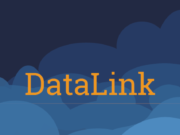Nearly 1,900 occurrences involving technical failures on turboprop aircraft were reported to the Australian Transport Safety Bureau (ATSB) between 2012 and 2016 — about 18 percent of all turboprop safety occurrences reported during the same period, according to a new report.
The ATSB said that of the 1,894 occurrences, 417 (22 percent) involved the airplanes’ power plants. Of occurrences involving operators with a known number of flight hours, 314 occurrences were reported between 2012 and 2015. “With a combined total of just over 1.4 million flight hours for these aircraft in this timeframe, this subset equates to approximately 2.2 occurrences every 10,000 flight hours,” the ATSB said in its report, Power Plant Failures in Turboprop-Powered Aircraft, released June 15.
Of the 417 power plant occurrences, 96 percent were classified as “low-risk,” four were considered “medium-risk,” and three were “high-risk,” the report said. None was classified as “very high-risk.”
All three high-risk occurrences involved engine failures or malfunctions with forced or precautionary landings in Cessna 208 Caravans, the report said.
Two occurrences resulted in minor injuries; both involved aircraft that were flown in agricultural operations, experienced engine problems and collided with terrain, the report said.
The Convair 580 had the highest rate of power plant–related occurrences — 13.9 per 10,000 flight hours — but the report noted that “with only four occurrences between 2012 and 2015, the high rate was due to comparatively low flight hours.” All four occurrences were classified as low-risk and were considered incidents rather than accidents or serious incidents. Their operator, which was the only Convair 580 operator in Australia, told the ATSB that the fleet was retired in 2017 and replaced with newer turbofan aircraft.


